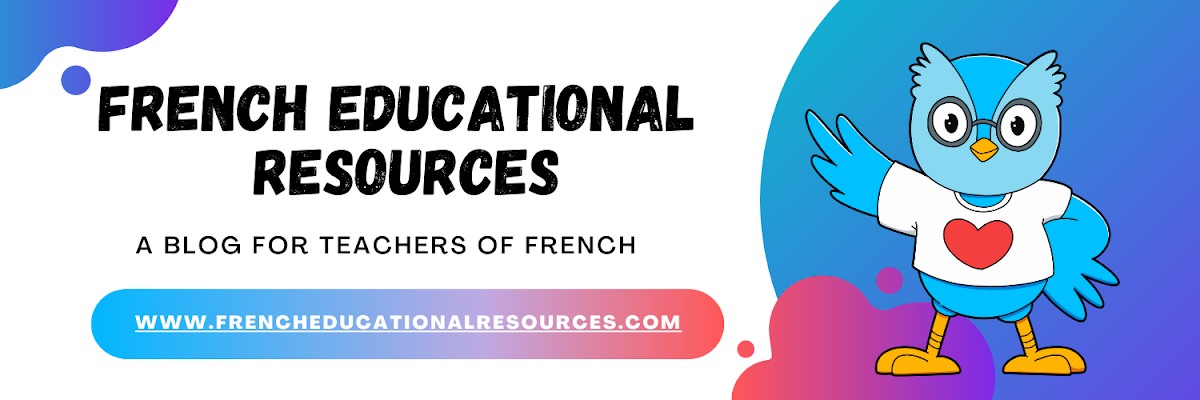Is your teaching mantra also, 'I want my students to be able to speak French?'. Then, Gianfranco Conti's teaching and tools will certainly resonate with.
I first travelled to France at 16, and on return to the Australian classroom, I asked myself why there wasn't a greater emphasis on listening and speaking. The "traditional" method at the time, and even now, seems to heavily focus on reading, writing and explicit grammar instruction. Don't get me wrong, I do love learning and teaching these areas of a new language (as they are, of course, important!), but in the classroom, did they enable me to speak the language? No. The ultimate goal is confidence in fluency in the target language (Fluency in the use of a particular set of vocabulary and grammatical structures regardless of level).
Conti's work focuses on just this - enabling students to automise structures to be able to use them spontaneously. This is how we reach fluency. Let me highlight a few "Conti" concepts that I incorporate in to all my teaching:
1. Comprehensible input
No doubt, that at uni, you learned Krashen's Input Hypothesis. Essentially, a learner improves in a 'natural' progression if they are exposed to language that is comprehensible - just one step above their current stage of linguistic competency (i + 1). As teachers, in an artificial classroom environment, we are in charge of the language input and can therefore ensure that our students understand the input language and slowly increase in difficulty to allow maximum learning potential. This, in turn, lowers the effective filter, aiding students to feel more motivated and uninhibited. Also, if you take comprehensible input in to account, your students can increase in sophistication much quicker as they will feel more capable to "push the envelope" and try new sentences (not just focusing on memorising massive word lists that are hard to use communicatively!).
2. Chunking
Fluency is 'chunked' speech. This means that we don't use isolated words in speech but we use them as small parts. For example, you don't just use 'allé' by itself, but you would use it as a chunk, 'je suis allé'. When we speak, we then use 'chaining' to connect these chunks (producing full sentences) which are linked by connectives. Cool, huh?
Of course, some words are learned independently (such as nouns or adverbs...), but they need to be practised with chunks. Conti uses 'sentence builders' to provide context to new and old language (see resource below). The takeaway message? Teach language in chunks!
 |
| Example of a sentence builder |
3. Reusing and recycling language
Automated language lives in our long-term memory. So how do you get it there? You need to reuse and recycle language! Language text books are certainly improving, but the traditional approach was the teach a content item and then say to students, "You should be able to use it as it was taught to you back in March!" Language should always be repetitively used. Use it so you don't lose it! As teachers, we can plan our curriculum to ensure that past content is weaved in and out of our lessons. Working in an immersive language teaching setting, we would use Leanne Hinton's 20/20 rule. To commit a chunk to memory, you will need to use said chunk 20 times in 20 different settings. This sounds like a lot, but it isn't once you apply the reuse and recycle language rule!
Applying Conti tools to your curriculum
So, I'm sure you have all come to this blog for some resources! Let me oblige. In order to achieve fluency in a unit, Conti outlines the progressive phases through the acronym, MARS EARS. From modelling a new construction (M) to spontaneously using the construction in communication (S). For each phase, I have included my own resources and ideas designed for a Year 8 term 3 unit on 'hobbies' is based on Conti's famous activities for each progressive phase. You can download the resources and use then as they are or use them as a template for your own work.
Note that these activities were used in conjunction with the AIM play, 'Veux-tu danser?', which provided the context for the unit on hobbies.
Also, these are resources designed for my students. They are not perfect. Resources are always designed to be improved. You may feel they have too much language, too little language. Not cover enough content, cover too much content. Modify at your will.
First step:
Design the curriculum to reuse and recycle language. You will notice that the new content is spaced out over the term and old content is interweaved. Ensuring adequate priming and routinisation is an absolute must before students can demonstrate fluency.
Year 8 Term 3 curriculum planning document
Second step:
Create your sentence builders to set the teachable language chunks for your students to use.
Hobbies sentence builder (students had already automatised approx. 1/2 of this language)
Comparison and superlative sentence builder
Past perfect sentence builder (main focus on 'avoir' as auxiliary and no explicit grammar instruction at this stage as automation with chunks is easier for learners to use!!!)
Third step:
Design resources, worksheets and activities for the classroom based on the MARS EARS progression. Each resource does not necessarily fit under each specific category, it depends on how you use them and why. Think of the resources as aiding to progress through 3 phases: priming > routinisation, to finally reach spontaneity.
Modelling:
Mind reader game - one student chooses a sentence secretly and the other students in the class or group have to guess which sentence they picked by reading aloud a sentence.
Disappearing text - get students to set a goal - how many sentences will they try to memorise? You can do this as an oral or writing game (great with mini whiteboards).
Awareness-raising:
Gap-fill exercise
Spot the missing word - listening task
Receptive processing:
Tangled translation with traditional translation (lower to higher cognitive demand)
Structured production:
Oral ping-pong - partner task
Staircase translation
Boardgame
Narrow reading (each passage is very similar)
Find someone who - give each student in the group at least one card. They read their card to the group and the group or the individual fills in the worksheet.
Explanation:
When you explain learned concepts, ensure that your students have internalised the structures well prior.
Autonomy, Routinisation and Spontaneity:
You can use many activities that you already employ in your classroom, such as speed dating, spot the difference (between pictures), student jigsaw tasks, listen and recall (reciting memorised sentence orders), running dictation, 4, 3, 2 technique (repeat the same information but reduce the time)...
Conti has so many activity ideas that, firstly, it is hard to implement them all (although all so fun!). Secondly, most of the activities you will likely already be using. You just need to be aware of the purpose and implement them at the correct stage to aid your students to fluency. Note that it is wise to reuse the same activities across the year as you want your students to learn the language, not always a new game.
For more information and ideas, you can read Conti's blog. He also had ready-made resources through his sentence builder website and the interactive website for students, The Language Gym. He also has purchasable books: Breaking the Sound Barrier, The Language Teacher Toolkit and French Sentence Builders. Also, join the group 'Global Innovative Language Teachers' on Facebook.






































